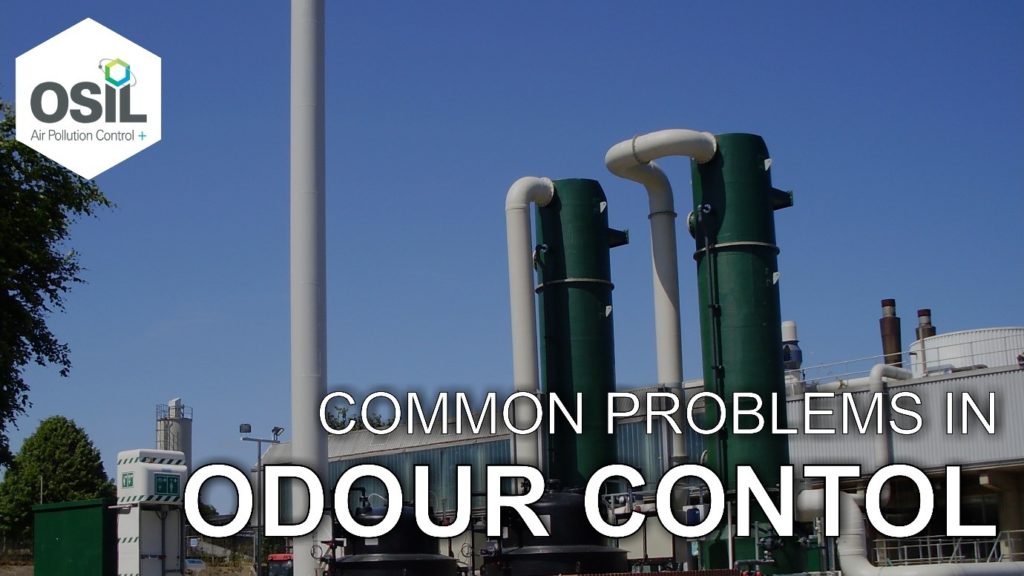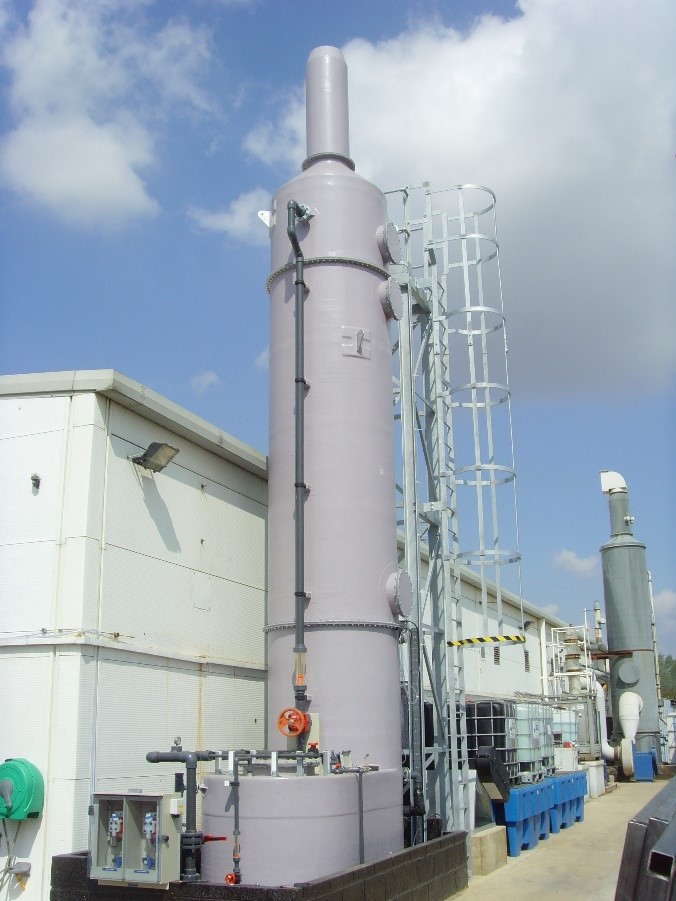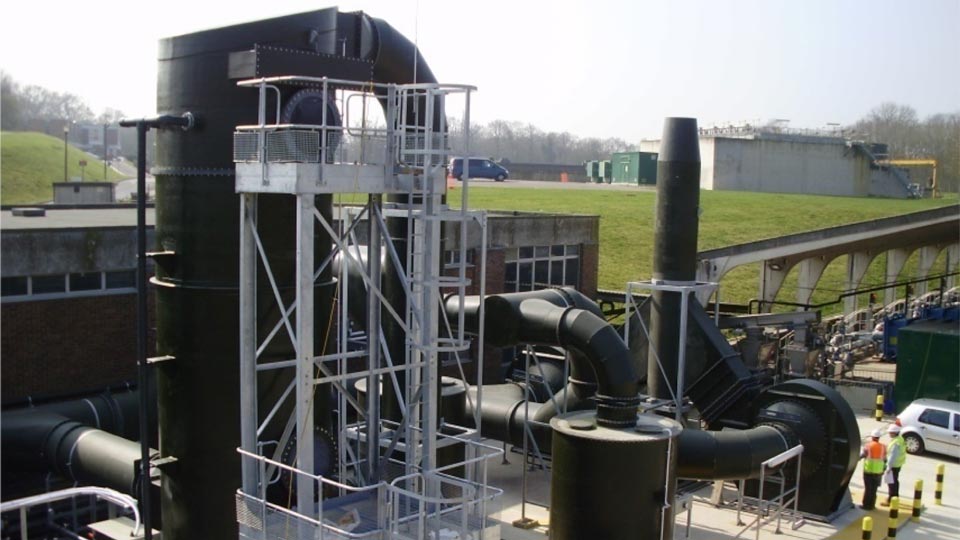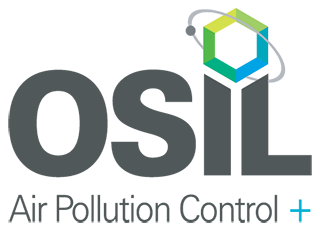
Problem odours are a by-product of many industrial processes such as wastewater treatment, incineration and chemical processing.
These odours must be controlled to minimise their impact on the environment. The common problems in odour control include:
- How to define and characterise what odours are being produced
- Selecting and sizing the correct odour control system
- Creating the correct microbiology in biofiltration systems
- Controlling the build-up of limescale (calcium carbonate) within chemical scrubbers
When problem odours are a nuisance they are considered pollution. Odour control is all about reducing the amount of odour that is released into the environment. We can do this with chemicals treatment, dry media filters or biological treatment.
However, before an odour control system is specified, it is first necessary to define and characterise what odours are being produced.
How to define and characterise what odours are being produced
Odour surveys are used to determine the character and concentration of odours so that the correct odour control solution can be designed.
There are two main types of odour control survey: olfactometry surveys and dispersion modelling surveys, which are utilised for different tasks.
Olfactometry surveys answer the question of what odours are produced; dispersion modelling surveys answer the question of how odours from your operation are likely to travel when released into the environment. Good odour control relies on both surveys so that we can design systems that work and don’t cause a nuisance.
Olfactometry surveys
When evaluating and validating odour complaints the correct survey is an olfactometry survey. Olfactometry involves collecting air samples and sending them to accredited laboratories where the odours can be analysed and identified. This process defines and characterises what odours are being produced.
At OSIL, we also have the expertise to evaluate olfactometry results for you. This reduces the time to finalise results and makes the process more efficient.
Dispersion modelling surveys
When we need to understand the effects odours have on the environment the correct survey is a dispersion modelling survey. Dispersion modelling simulates odour dispersion so that environmental risks can be categorised.
This is useful when upgrading odour control systems and determining the root cause of odour pollution complaints. It may be the case that your existing odour control system is not up to the job or has improper ventilation.
The most relevant survey when designing odour control systems is olfactometry because for an odour control system to be effective it has to be designed for the identified odours. No two systems offer the same performance.
An incorrectly specified odour control system will not perform as intended and it could be extremely costly to your business by forcing further investment.
Selecting and sizing the correct odour control system
Odour control is all about reducing the amount of odour that is released into the environment and there are several systems we can use to achieve this.
Odour control systems include chemical scrubbing, biological treatment and dry media filters. These systems are intended for different applications.
Chemical (wet) scrubbers

These systems make contact between a liquid absorbent and a contaminated air gas stream for simple applications. Single-stage chemical scrubbing systems are used where only a basic scrubber is all that’s needed – but you can also specify multi-stage chemical scrubbers that target a more diverse range of odours and pollutants for bigger tasks.
Biological (biofiltration) systems
These systems can treat a higher volume of odours without the addition of chemicals using a media bed colonised by microorganisms.
Biological systems can remove a wide range of contaminants without the need for chemicals, and unlike chemical scrubbers, they produce no contaminated water as a by-product. This may suit your operation better.
Dry media systems
These systems can be designed to treat a wide range of odours, including H2S, organic sulphides, mercaptans, ammonia and VOCs.
Dry media systems are inherently simple in operation and their performance is determined by the specification of filters. These include activated carbon, impregnated carbon, oxidising alumina media, and hybrid, multi-media filters.
Using these systems together
It’s important to recognise the individual limitations of these systems, with the primary limitation being that some are better than others at removing certain contaminants. You also have to consider the space available to you on-site.
Sometimes, more than one process is needed. Biological and dry media solutions can be used as complementary technologies for polishing another primary technology (such as chemical scrubbing) or as standalone treatment systems.
Biological systems – getting the microbiology right
The most common problem when designing biological odour control systems is getting the microbiology right. We need to create an environment where microorganisms can not only thrive but also degrade the odours as efficiently as possible.
The variety of microorganisms depends on the nature of the odours. Biological systems often contain the following types of bacteria:
- Sulphur oxidising bacteria
- Heterotrophs for VFA degradation
- Nitrifying bacteria for ammoniacal odours
Biological diversity is essential to capture the maximum number of pollutants. The spatial distribution is also important for consistency.
When designing microbiology for biofiltration systems, we have to consider the odours and the microorganisms in terms of capture and emission.
The biology of the biofiltration system also depends on the type of bio filtering used. There are two main types of technology in question:
Biotrickling filters / Bioscrubbers
With biotrickling filters / bioscrubbers, odours are forced through a media bed colonised by microorganisms in a liquid medium. As contact is made between the odours and microorganisms, the microorganisms capture the odours and degrade them. The contaminated water is recirculated to achieve excellent results. When the microbiology is correct, bioscrubbers can be 100% effective at removing odours.
Biofilters
Biofilters are extremely effective in applications where the odours are mostly organic. The air flows through the living biomass where microorganisms absorb pollutants. This technology requires a sufficient surface area for biomass growth. When the correct microbiology is specified, biofilters are extremely effective at filtering VOCs.
What’s the key difference?
The difference between biotrickling and biofilters is that biofilters do not recirculate the water as biotrickling filters do. Bioscrubbers are best for highly water-soluble compounds, while biofilters are best for volatile organic and inorganic compounds.
When specifying a system, the space available to you on-site will also need to be considered. Fixed bed biofilters have the greatest physical footprint while drained bed biofilters have the smallest footprint. Bioscrubbers sit in the middle.
Chemical scrubbing – controlling the build-up of limescale

The build-up of limescale (calcium carbonate) in chemical scrubbing systems is a common problem. A simple solution is to use water softeners to stop the build-up of limescale. This is a cost-effective solution that prevents further build-up.
Limescale can become a serious problem if it is allowed to consolidate. This is why it’s important to clean the system with descaling agents periodically.
Biodegradable cleaning agents are available for this task. These should be run through the system during maintenance. Pipes, components and tanks should all be cleaned, and it may be necessary to do this every few months.
The risk of limescale build-up is blockages in the system and damage to components. This will increase maintenance costs. We recommend descaling your chemical scrubbing system at least once a quarter and using water softeners during cycles.
